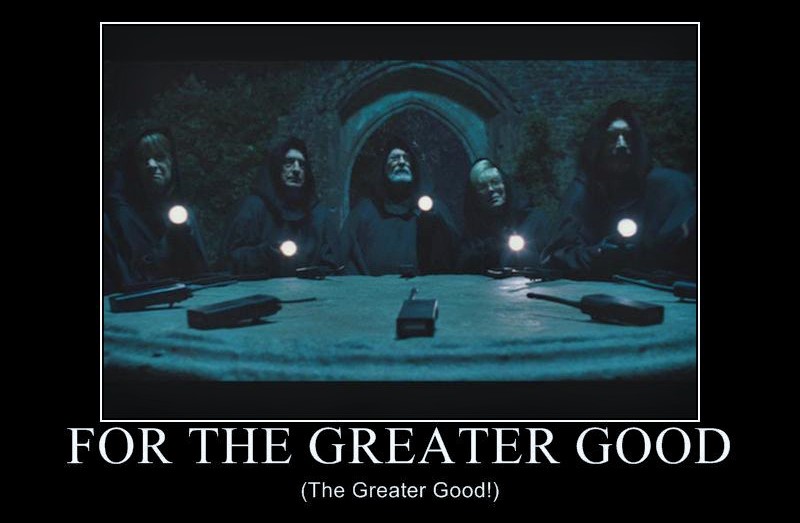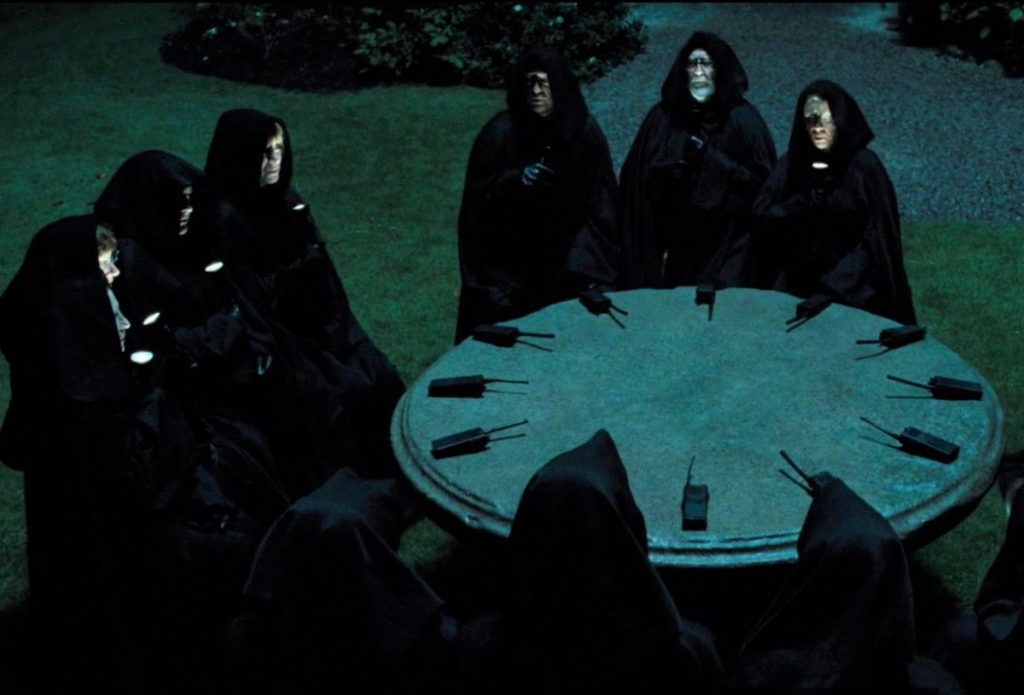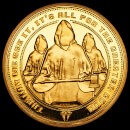Cults are nothing new. Indeed, if asked to name a cult, you could probably name a few. In ancient Greece and Rome, a cult was simply the care owed to a deity, the rituals carried out at a shrine or temple. A mystery cult was a religious group that celebrated a minor god or goddess or a lesser-known aspect of a deity’s history. The word “cult” has different connotations today.
Janja Lalich, Ph.D., professor emerita of sociology at California State University, Chico, is a big gun in cult research. Her website, Cult Research, provides extensive information about the mental mechanics involved in cults. She has also included resources for recognizing signs of a cult and how to help others who may have been impacted by a cult.
Modern Cults
There have been too many cults to count throughout history, but the vast majority have been small and soon forgotten. A post on Insider.com listed the six most notorious cults in history. (These cults have been extensively discussed and researched by people who were kind enough to share their findings online.)
- The (Charles) Manson Family famously murdered seven people over the course of two nights. Their stated intention was to start a race war. The Manson Family was formed in the late 60s.
- Members of Heaven’s Gate were told that their leader was the reincarnation of Jesus, that God was an alien, and that the end of the world was near. In 1997, 39 members died after ingesting barbiturates and putting plastic bags over their heads. It is the largest mass suicide on US soil.
- The cult Aum Shinrikyo (“Supreme Truth”) was founded in the ’80s by Shoko Asahara. He claimed to be Christ and — at one point — garnered tens of thousands of followers across the world. Asahara’s teachings started out spiritual and then became increasingly violent. Cult members even paid money to drink Asahara’s blood. In 1995, members of Aum Shinrikyo killed at least thirteen people when they left five bags filled with a toxic nerve agent on three Tokyo train lines during rush hour.
- In 1993, the Branch Davidians had a 51-day standoff with the FBI. The leader, David Koresh, believed that he could talk to God, and that the world was ending. He convinced more than 100 people to move to a compound outside of Waco, Texas, and follow his teachings (which included his belief that men could have multiple wives, including girls as young as 10).
- The Children of God was founded in 1968 as a system of communal living under the strict teachings of preacher David Berg. Multiple former members have testified that the church used prostitution as a recruitment tool and engaged in widespread child trafficking and sexual abuse. The organization later rebranded to The Family of Love International, and it is still active online.
- Jim Jones founded The People’s Temple in Indianapolis in 1955 but moved the band to Guyana, and called the place Jonestown, in 1977. Reports of member abuse followed the group from place to place. In 1978, Jones instructed all of his followers to drink cyanide-laced Flavor Aid. More than 900 people died. This is the origin of the slang expression “Drinking the Kool-Aid,” meaning a person who believes in a possibly doomed or dangerous idea.
From the Wikipedia entry on cults:

“In modern English, a cult is a social group that is defined by its unusual religious, spiritual, or philosophical beliefs, or by its common interest in a particular personality, object, or goal. This sense of the term is controversial, having divergent definitions both in popular culture and academia, and has also been an ongoing source of contention among scholars across several fields of study. The word ‘cult’ is usually considered pejorative.”
Cults are attractive because they promote a feeling of comfort, and because they satisfy the human desire for absolute answers.
Characteristics Common to Cult Leaders
Lists of characteristics vary in inclusiveness and contain both personality and behavioral characteristics.
Personality
- Narcissism shows up on every list
- Charisma is an essential quality
- Personal proclivities that shape what’s expected of group members
- Need for control/maintain power imbalance
- Psychopath
- Often delusional, believing their own teachings
Behavior
- Offer tantalizing promises
- Be unpredictable (reactions, appearances, next demands)
- Organize “love bombs” for new recruits
- Promote an us vs. them mentality, feelings of superiority
- Isolate members from family, former friends
- Public humiliation of established members
- Demand detailed acknowledgment of individual fears and mistakes
- Repeat various lies and distortions till members can’t recognize reality
- Promote paranoia: a group, family or government is out to get members
- Encourage members to spy on each other
Writing in Psychology Today in 2012, Joe Navarro, M.A., presented his personal list of 50 clues to identifying cult leaders. Listed below are several of his items.
- A grandiose idea of who he is and what he can achieve
- Preoccupied with fantasies of unlimited success, power, or brilliance
- Demands blind, unquestioned obedience
- Requires excessive admiration
- Has a sense of entitlement or power
- Expects to be treated as special at all times
- Expects to be able to bend rules and break laws without repercussion
- Arrogant and haughty
- Hypersensitive to how he is seen or perceived by others
- Is highly dependent on tribute and adoration and will often fish for compliments
- When criticized, lashes out with rage
- Anyone who criticizes or questions him is called an “enemy”
- Hates to be embarrassed or fail publicly; often reacts with rage
- Publicly devalues others as being inferior, incapable, or not worthy
- Habitually puts down others as inferior
- Ignores the needs of others, including biological, physical, emotional, and financial needs
- Frequently boastful of accomplishments
- Needs to be the center of attention
- The word “I” dominates his conversations
- Behaves as though people are objects to be used, manipulated, or exploited for personal gain
- Is deeply offended by signs of boredom, being ignored, or being slighted
- Doesn’t seem to feel guilty for anything he has done wrong, nor does he apologize
- Believes he possesses the answers and solutions to world problems
- Works the least but demands the most
- Sees self as “unstoppable” and perhaps has even said so
Characteristics Common to Cult Members
- Female: world-wide, 70% of cult members are women
- Explanations for this vary
- Generally average sorts of people. No trends in location, income, etc.
- Suffer low self-esteem, making them especially susceptible to love bomb (compliments, etc.)
- Many have rejected standard religions
- Intelligent
- From sheltered environments
- Blame others for their failures
- Strive for perfectionistic goals
- Often have no idea they are in a cult!
Characteristics Common to Religious Cults
- It opposes critical thinking
- Isolates members and punishes them for leaving
- Emphasizes special doctrines outside accepted scriptures
- Seeking inappropriate loyalty to leaders
- Devalues the family unit
- Crossing boundaries of behavior (especially sexual) set in accepted religious texts
- Separation from the main religious structure
Common Recruiting Tactics
- Target people who are stressed, emotionally vulnerable, have tenuous or no family connections, or are living in adverse socioeconomic conditions.
- People who were neglected or abused as children may be easily recruited because they crave the validation denied them in their childhood
- High school and new college students are good targets for cult recruitment since they’re still forming their identity and (in the case of college students) have recently been separated from their families
- One old (1980) study of 1000 high school students in the San Francisco Bay Area found that 54% reported at least one recruitment attempt by a cult member, and 40% reported 3 to 5 contacts
- I can only imagine that the rise of various social media platforms would have exploded those numbers.
Damage to Cult Members

Various research has established that former cult members suffer long-term negative effects. Dr. John G Clark, Jr, of Harvard University works with former cult members and their families identifies the following
- Increased irritability
- Loss of libido or altered sexual interest
- Ritualism
- Compulsive attention to detail
- Mystical states
- Humorlessness
- Heightened paranoia
Because these are symptoms similar to temporal lobe epilepsy, it’s reasonable to assume that membership in a cult is a brain-changing experience.

Bottom line: There is much we can and should learn about cults—possibly in our lives, certainly in the world around us. Many of these qualities and behaviors are present to some degree in people who aren’t actual cult leaders or members. Still, they provide fodder for compatible/consistent constellations of attitudes and behaviors. Think character creation!
















A recent example of a cult is covered in the Net Flix series “Tiger King”. It fits the above descriptions. I will no say more so as to not give away the plot to people who have not yet seen it.
Thanks! Sorry I didn’t pick up your comment sooner.
Vivian